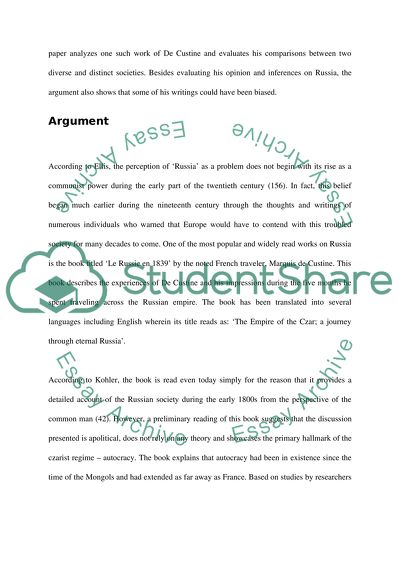Cite this document
(“La Russie in 1839: Marquis de Custine Essay Example | Topics and Well Written Essays - 1250 words”, n.d.)
Retrieved from https://studentshare.org/history/1430033-la-russie-in-1839-marquis-de-custine
Retrieved from https://studentshare.org/history/1430033-la-russie-in-1839-marquis-de-custine
(La Russie in 1839: Marquis De Custine Essay Example | Topics and Well Written Essays - 1250 Words)
https://studentshare.org/history/1430033-la-russie-in-1839-marquis-de-custine.
https://studentshare.org/history/1430033-la-russie-in-1839-marquis-de-custine.
“La Russie in 1839: Marquis De Custine Essay Example | Topics and Well Written Essays - 1250 Words”, n.d. https://studentshare.org/history/1430033-la-russie-in-1839-marquis-de-custine.


